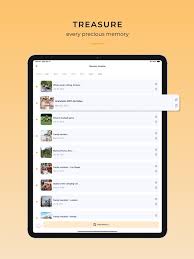Maintaining everyone in the family organised and on the same page can prove difficult in the fast paced environment of today. There are so many events, appointments, and deadlines to keep track of that things easily slip through the gaps. A shared calendar can really be a lifeline in such a situation.

Digital tools for the routine planner app that let several people view and change the same calendar are shared calendars. Families may easily remain orderly and organised this way so that everyone is aware of what is happening and when.
These 5 ideas on using a shared calendar will help you to maintain family wellness on target:
1. Create a family calendar and set definite rules.
- Choose a platform: Choose a calendar software that fits your family’s tastes and grocery list planner. Popular choices are specialised family calendar apps, Outlook Calendar, or Google Calendar.
- Invite everyone: Make sure every family member including the kids has access to the calendar. Think about building separate colour-coded accounts for certain occupations or age groups.
- Create expectations: Clearly state the intended purpose for the calendar and the frequency of updating it. This will guarantee everyone is in agreement and assist to avoid misinterpretation.
2. Enter appointments and events with exact detail.
- Include essential information: Add events keeping in mind the date, time, venue, and a quick synopsis. This will enable everyone to plan appropriately and grasp the background.
- Set reminders: Create reminders on the calendar to notify relatives of forthcoming activities. For the crucial home checklist, appointment, or deadline, this can especially be useful.
- Consider recurring events: If you have routinely planned events such as weekly meetings or school drop-offs, set them up as recurring events to save time.
3. Use labels and colour-codes events.
- Create a color scheme: Establish a colour palette. Give particular colours to several kinds of events, including familial, personal, educational, or professional ones. This will help one to clearly identify among several kinds of activities.
- Use labels for particular occurrences in addition to colours to help classify them. You might designate school activities as “elementary,” “middle,” or “high school,” for instance.
- Tailor your view: Try many calendar views—daily, weekly, or monthly—to see which one best fits your family’s circumstances.
4. Create Notifications and Reminders.
- Utilize reminder features: Use reminder tools to make sure everyone is ready for significant events long in advance. Set reminders to get emails, texts, or app notifications.
- Think about time zone variations: Set reminders based on whether members of your family live in various time zones to prevent missed events.
- Create recurring reminders: Set up repeated reminders to automatically handle routinely occurring activities, such weekly tasks or monthly meetings.
5. Use labels to classify events.
- Create custom labels: Make unique labels, Create labels pertinent to the activities and interests of your family. This will make planning events and simple searching for what you need clear-cut.
- Filter by labels: View events depending on particular labels using the calendar’s filtering tool. This might be useful when organizing family trips or time for personal pursuits such as online wellness journals.
- Share labels with others: Share labels with others to make sure they interpret the significance of various labels so as to prevent misunderstandings when you are distributing the calendar to others.
Conclusion:
Good use of a shared calendar will help your family remain orderly, coordinated, and stress-free. Managing hectic schedules, enhancing communication, and guaranteeing everyone is in agreement all depend on this useful tool.